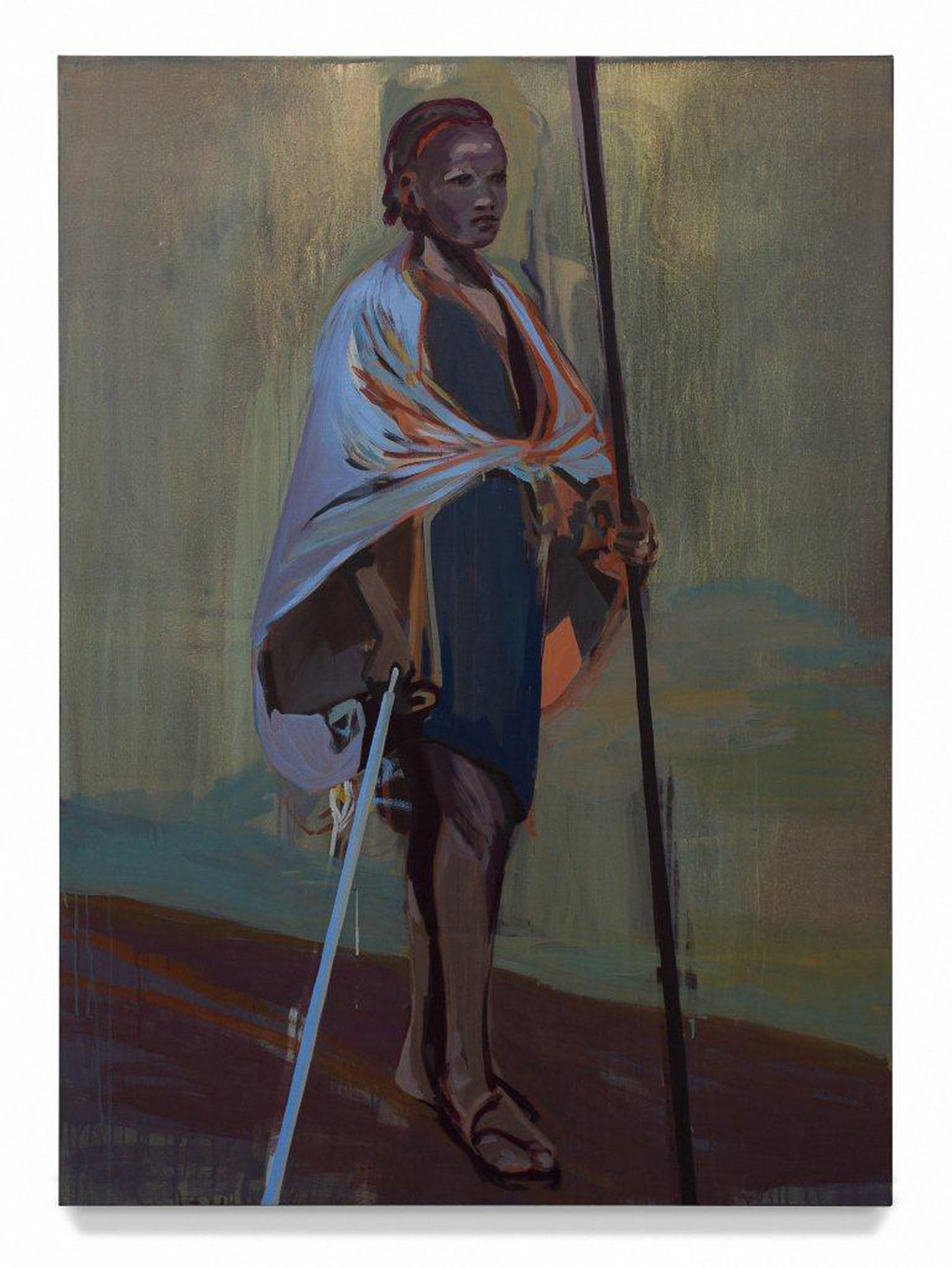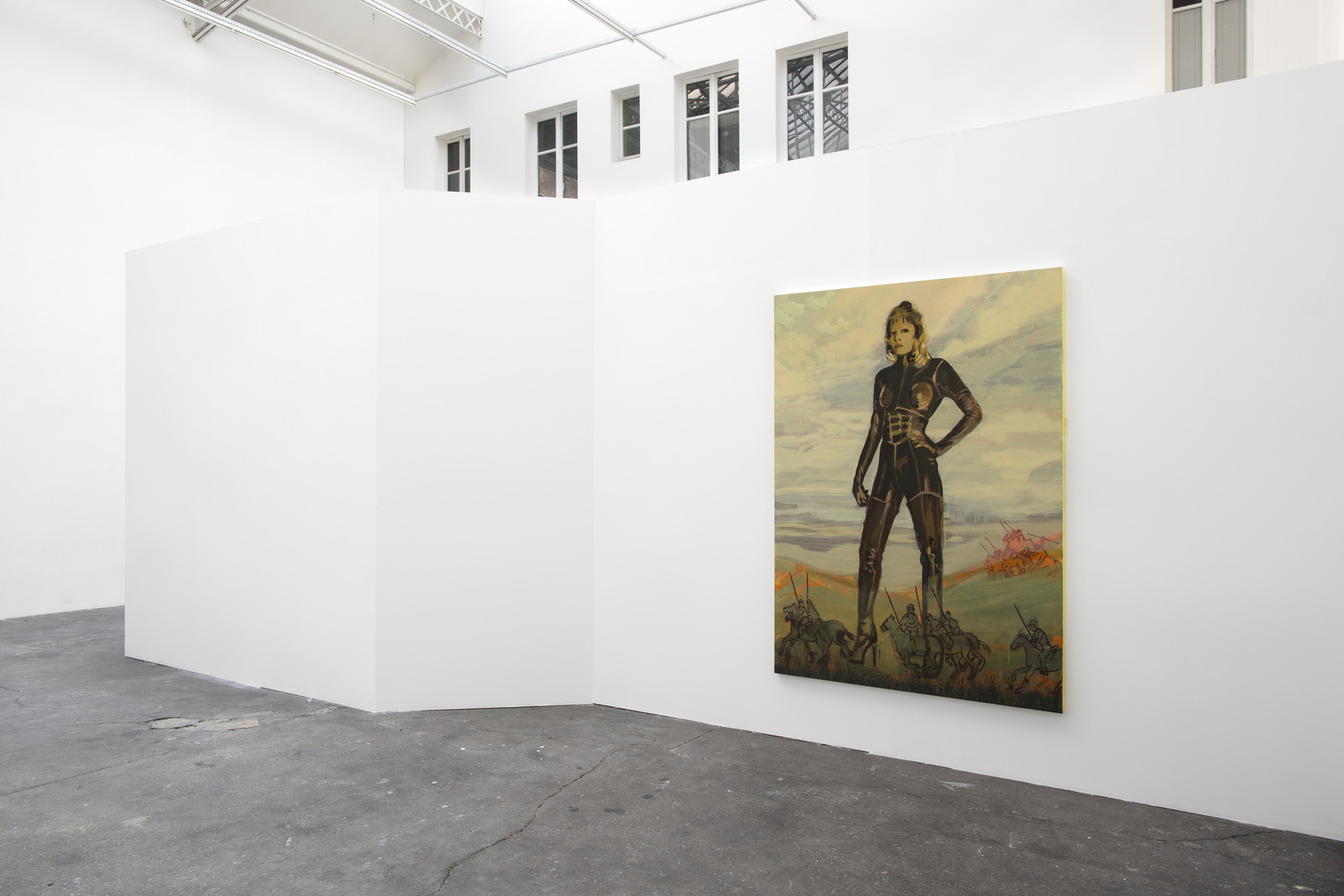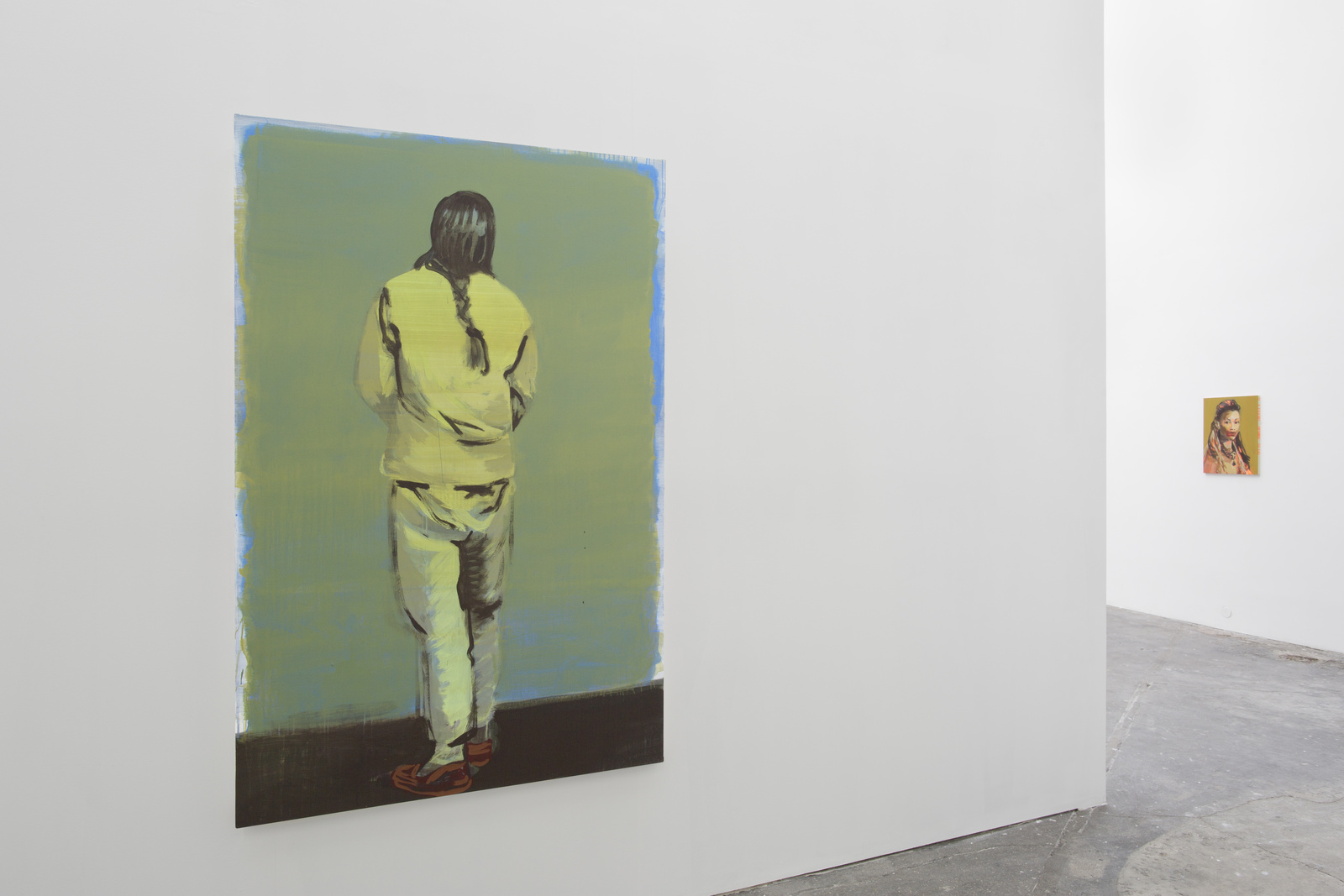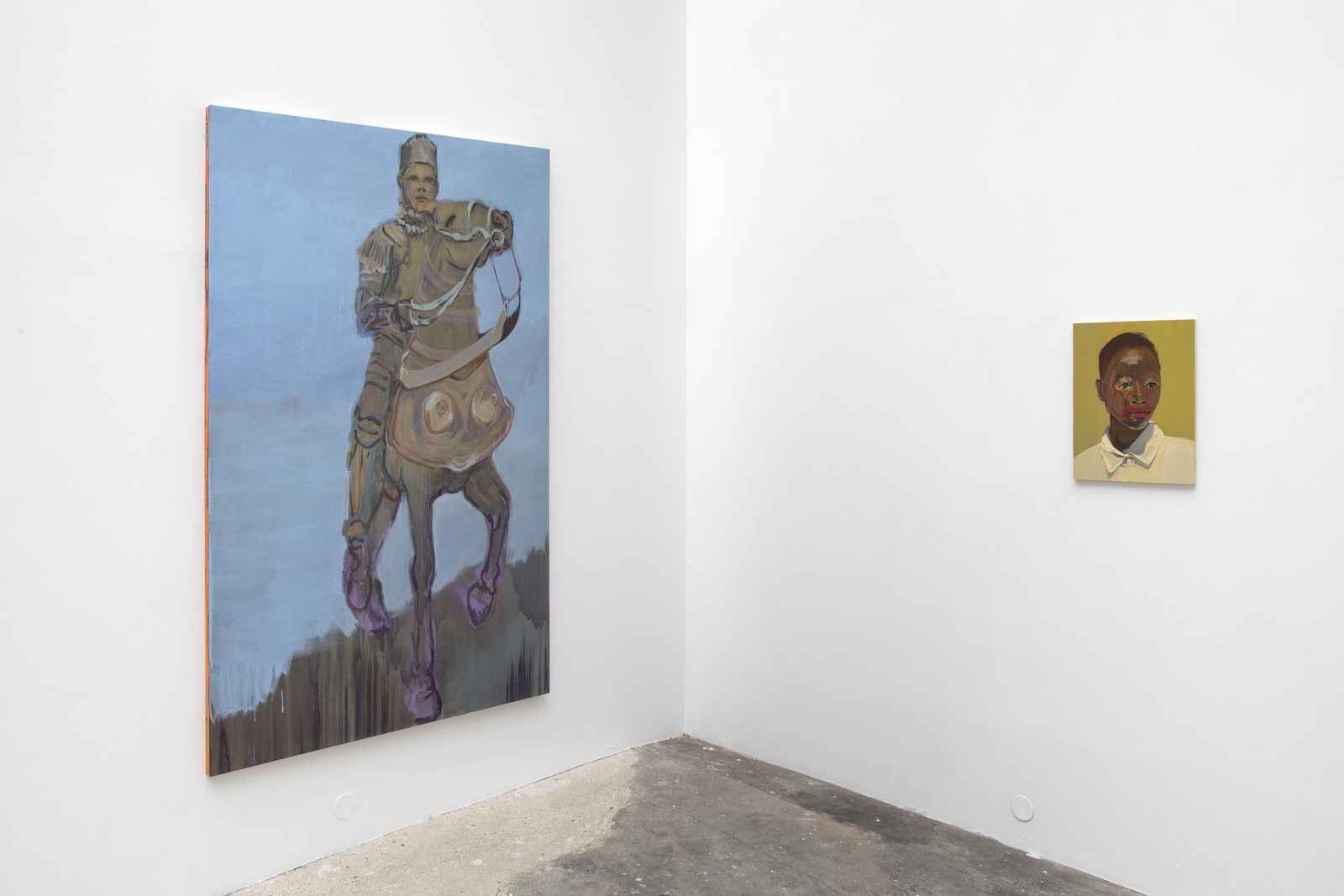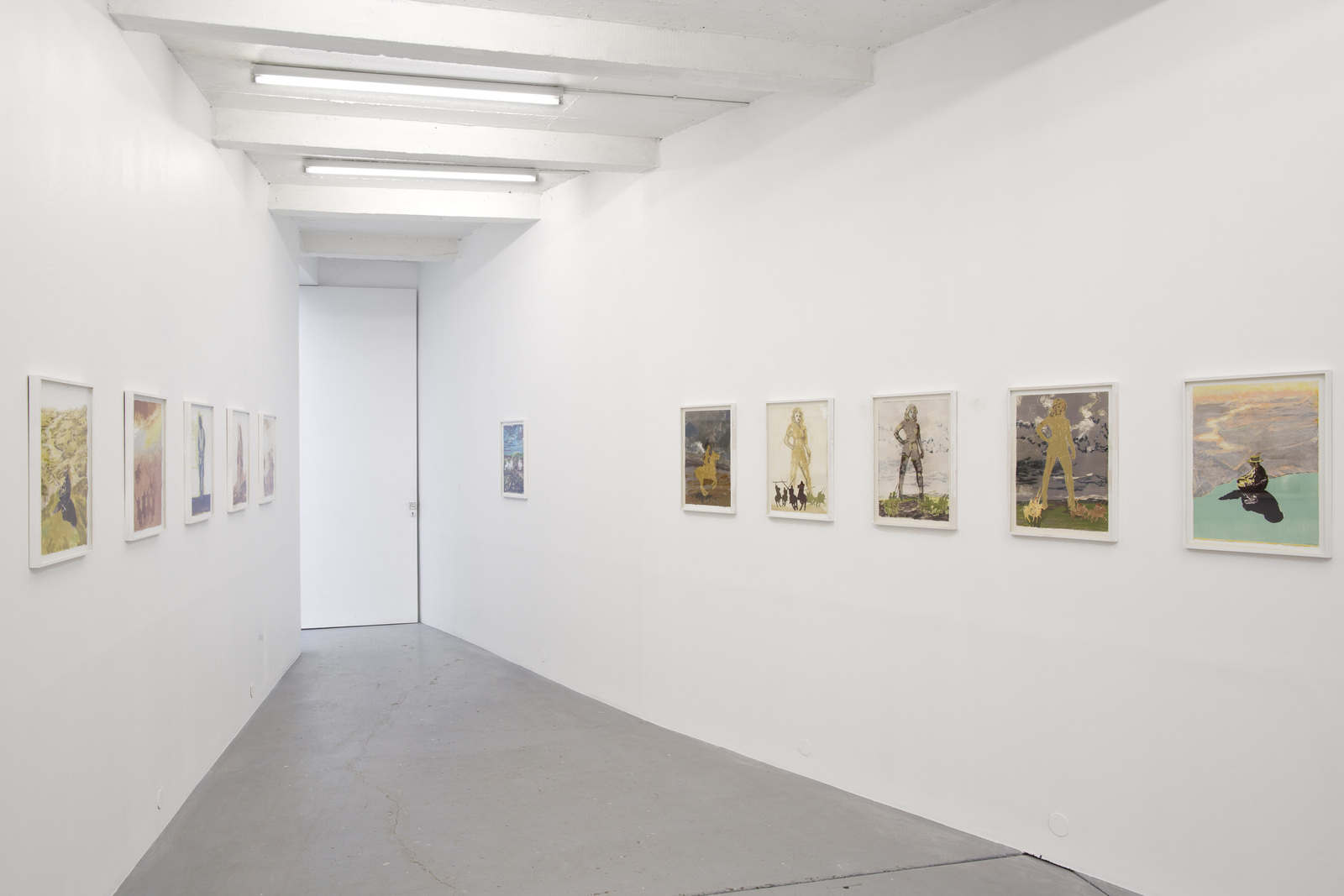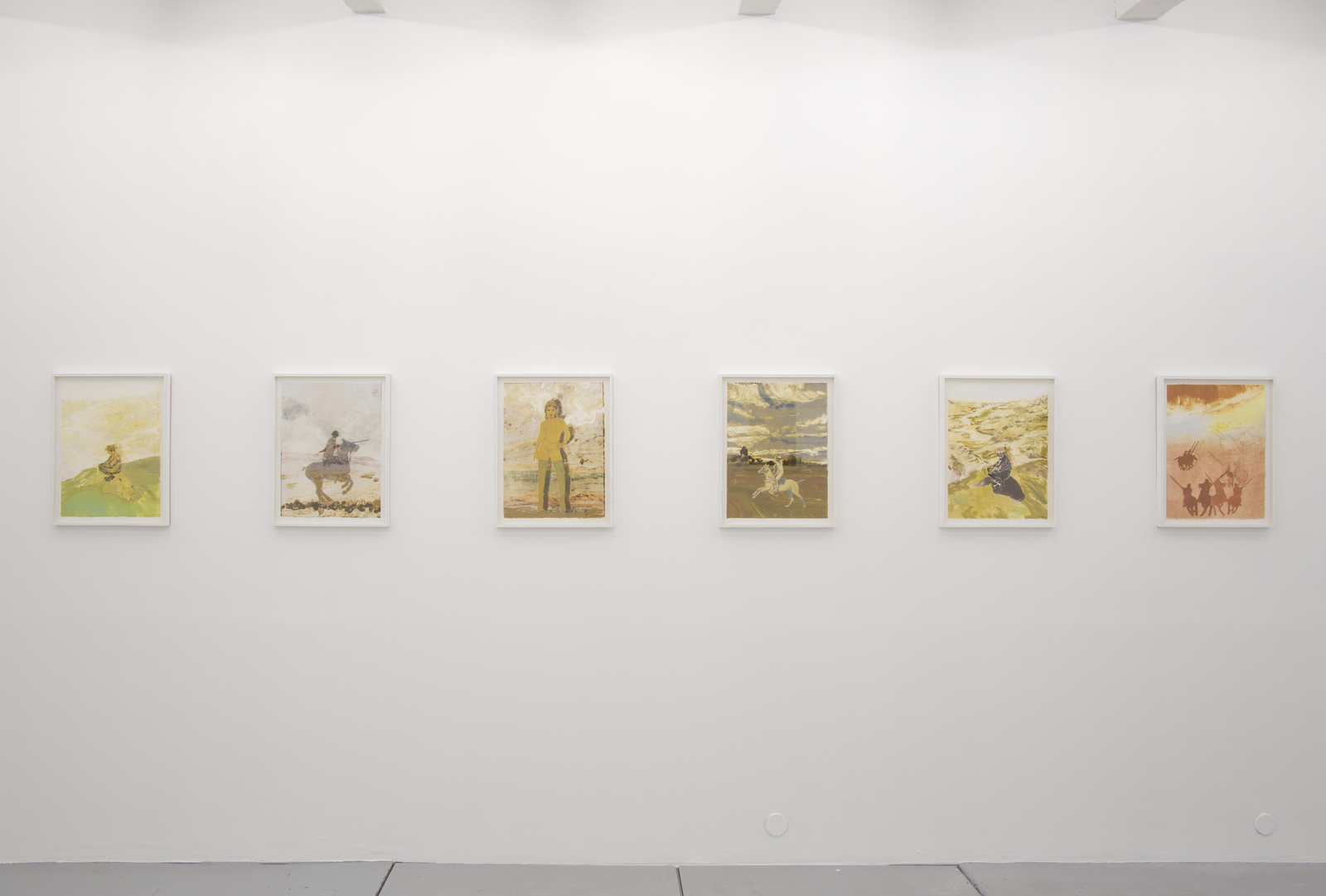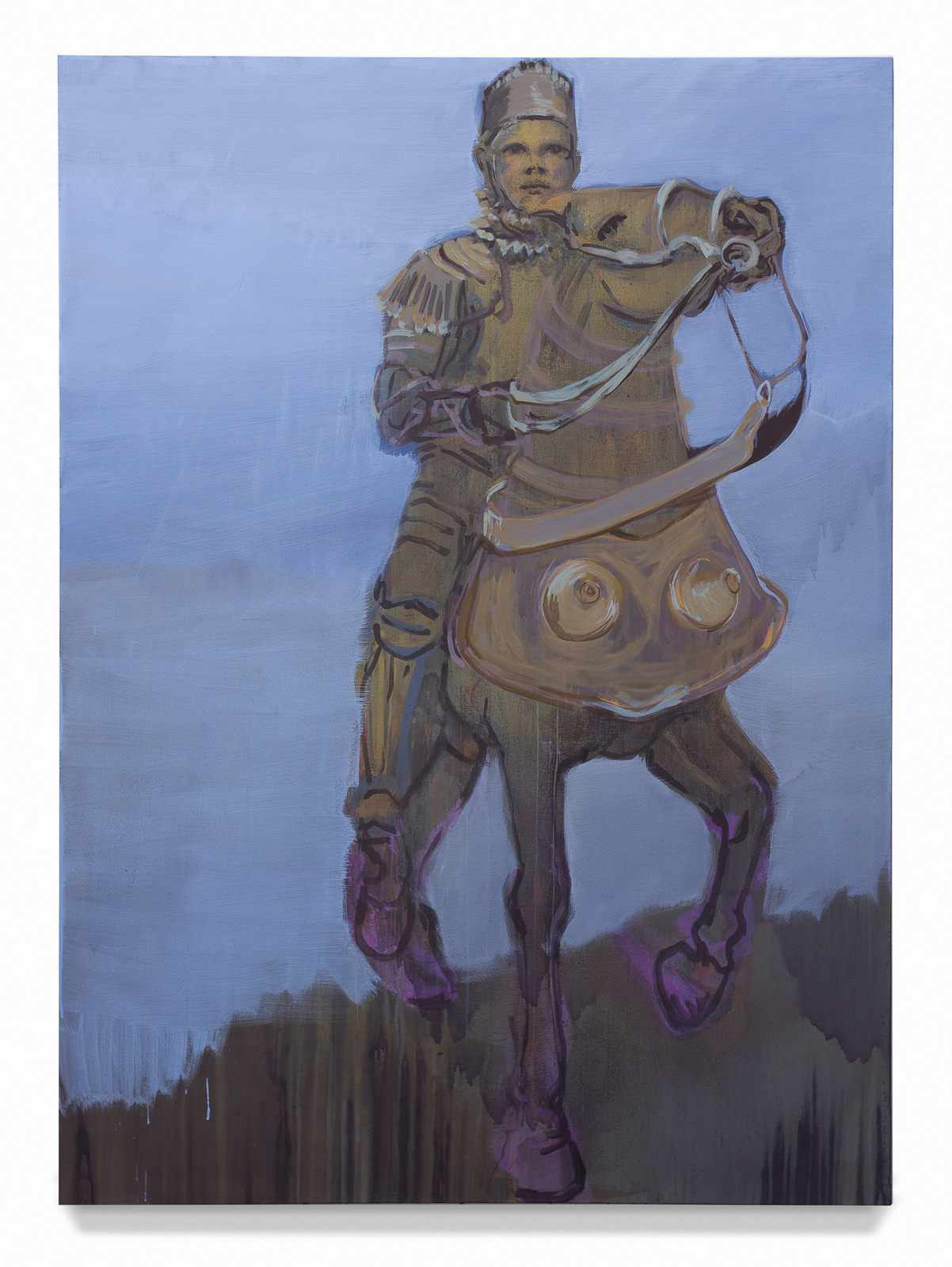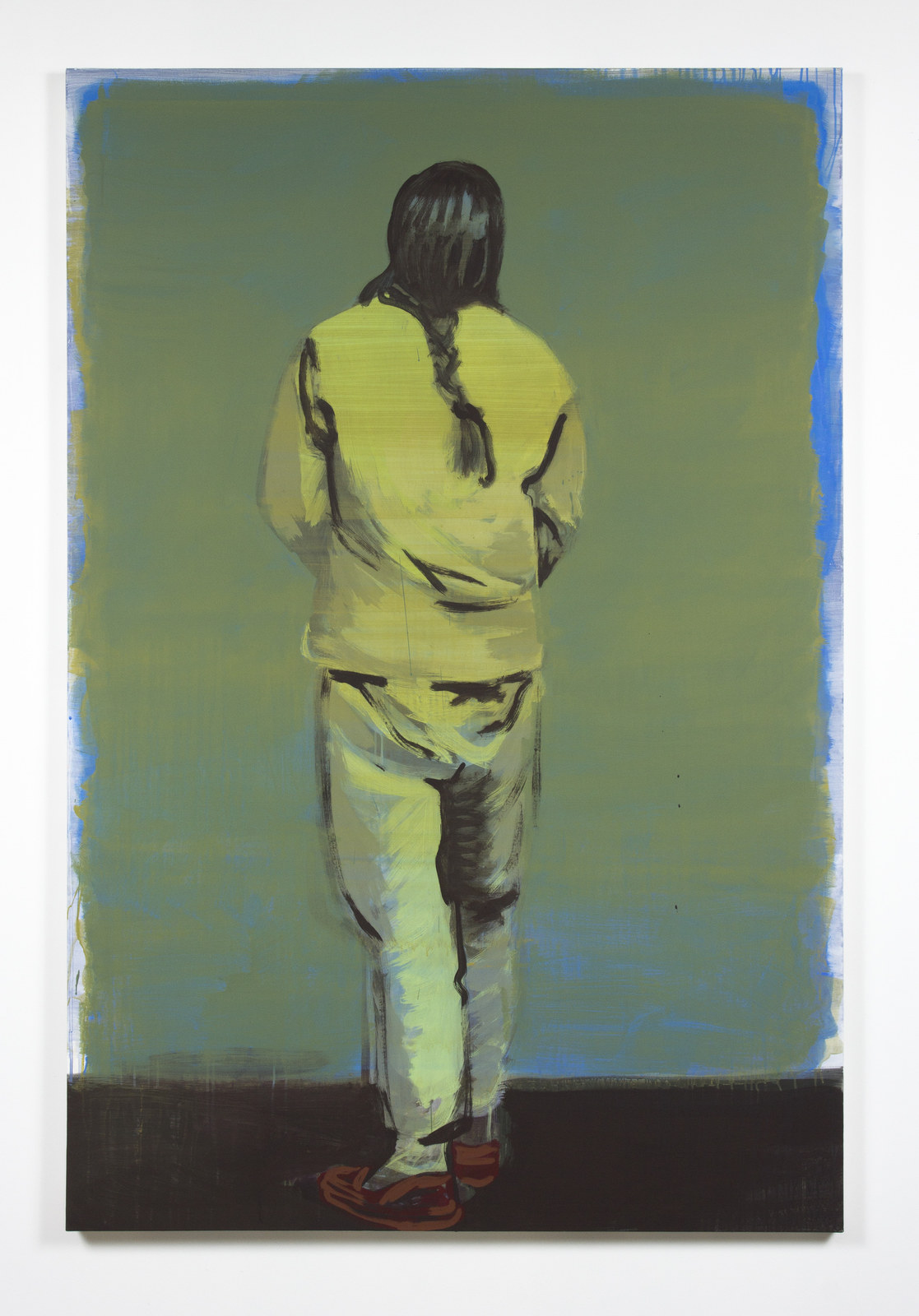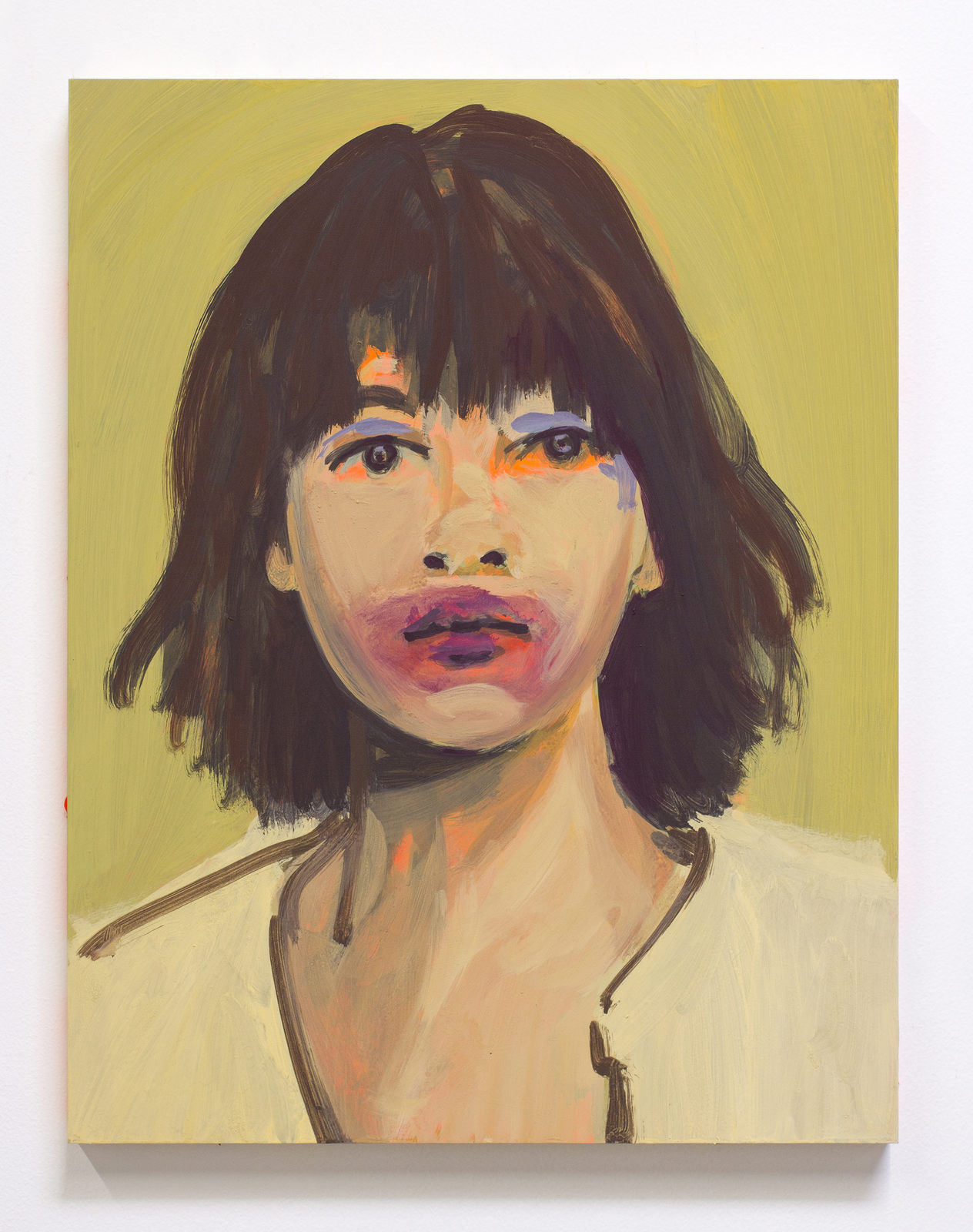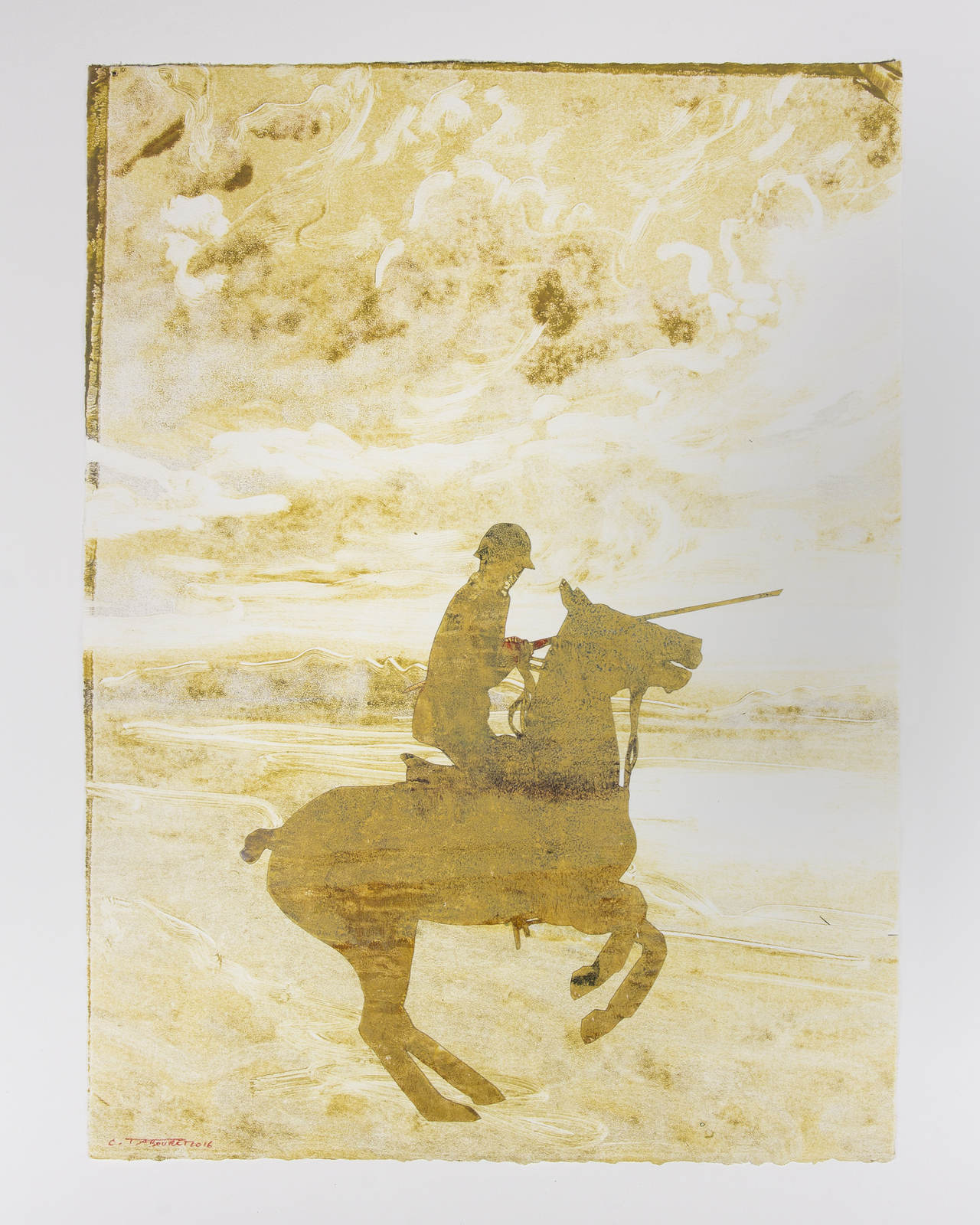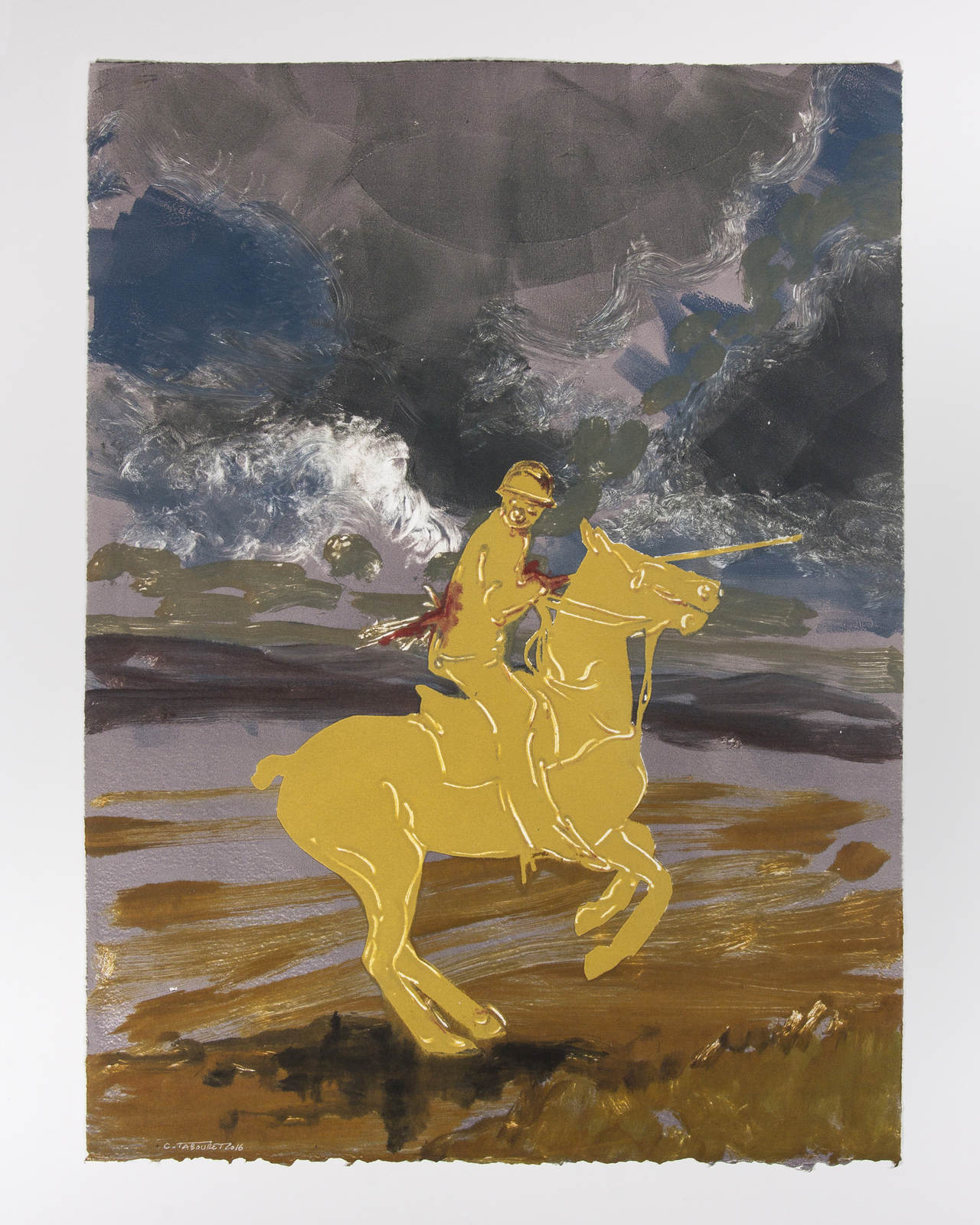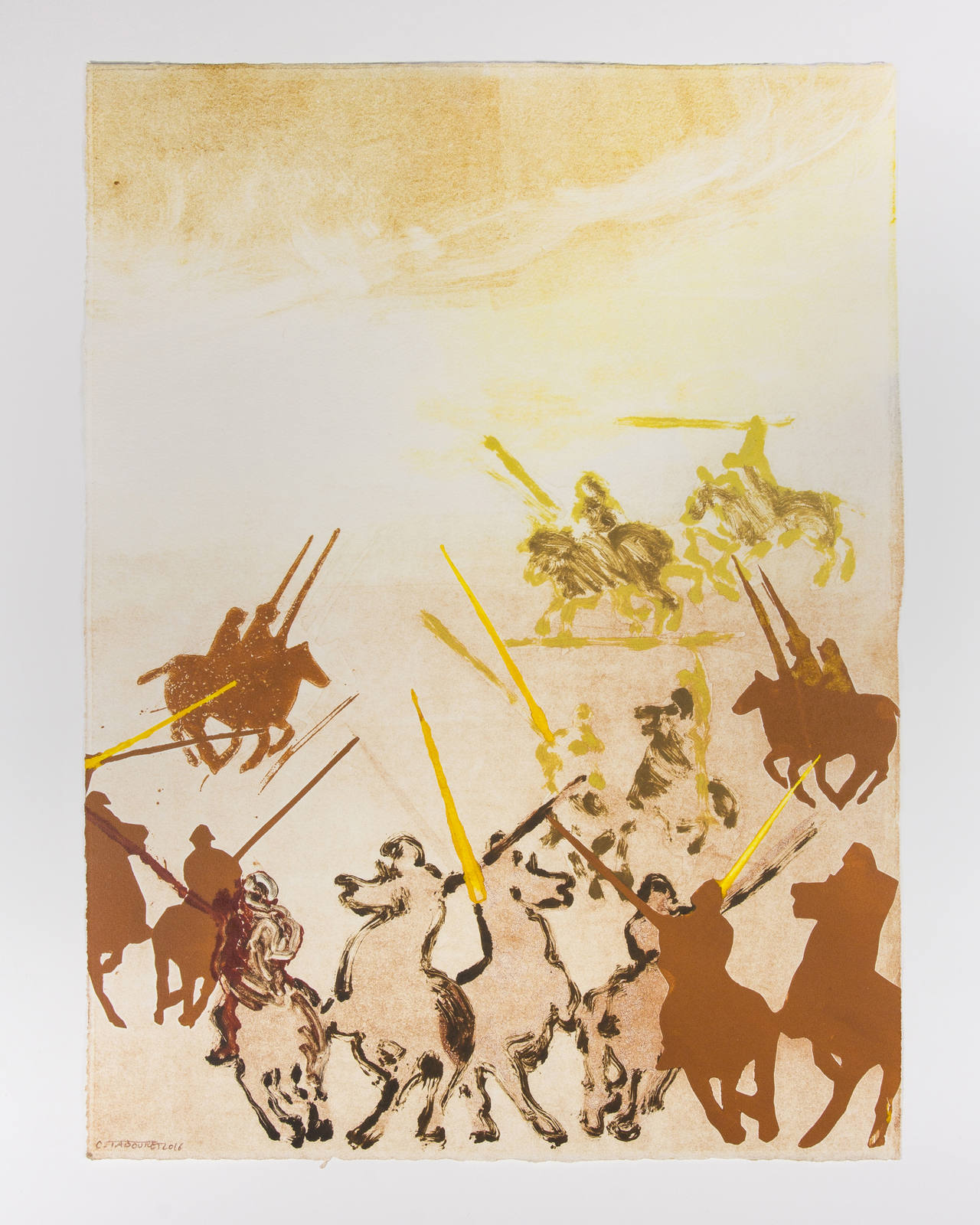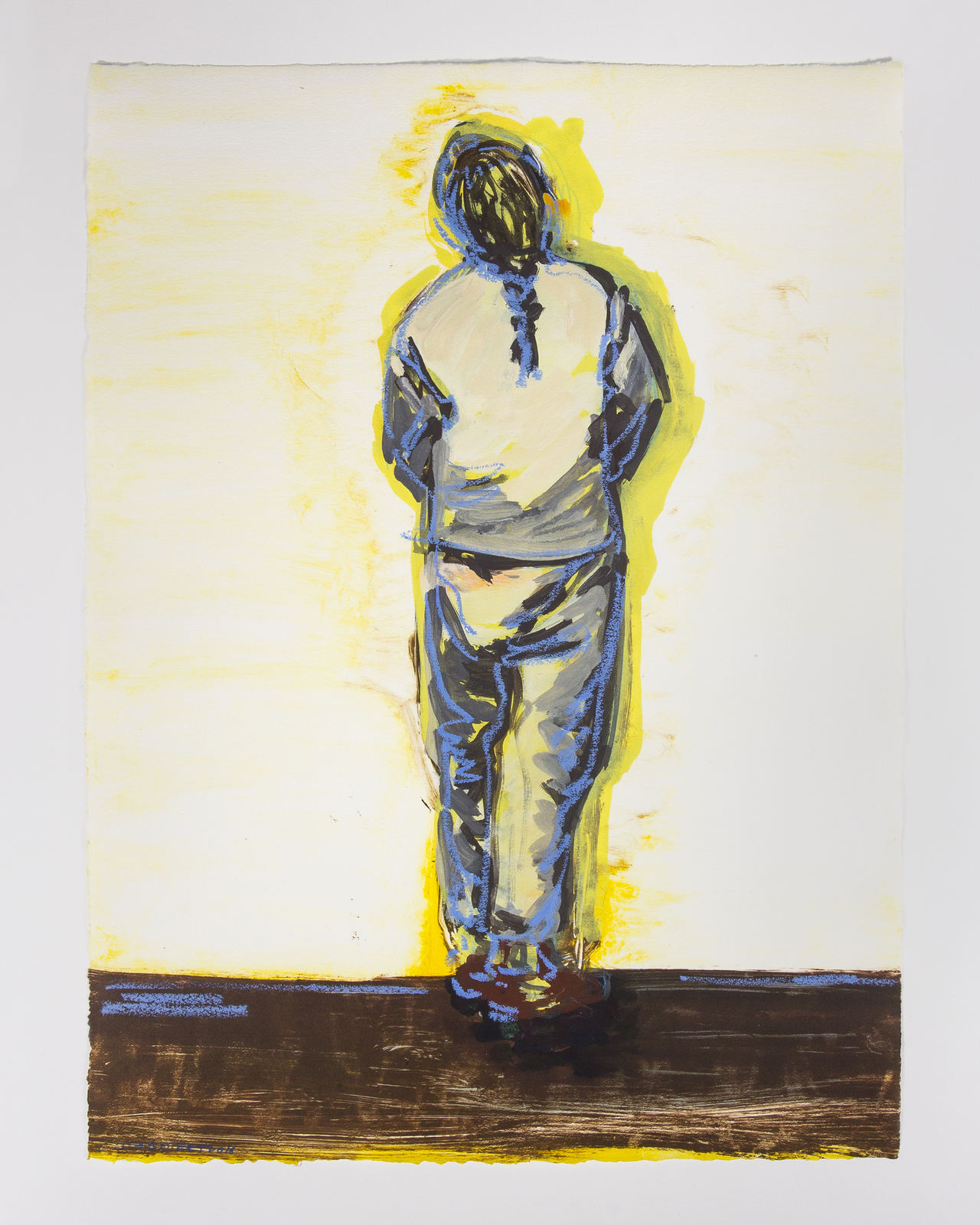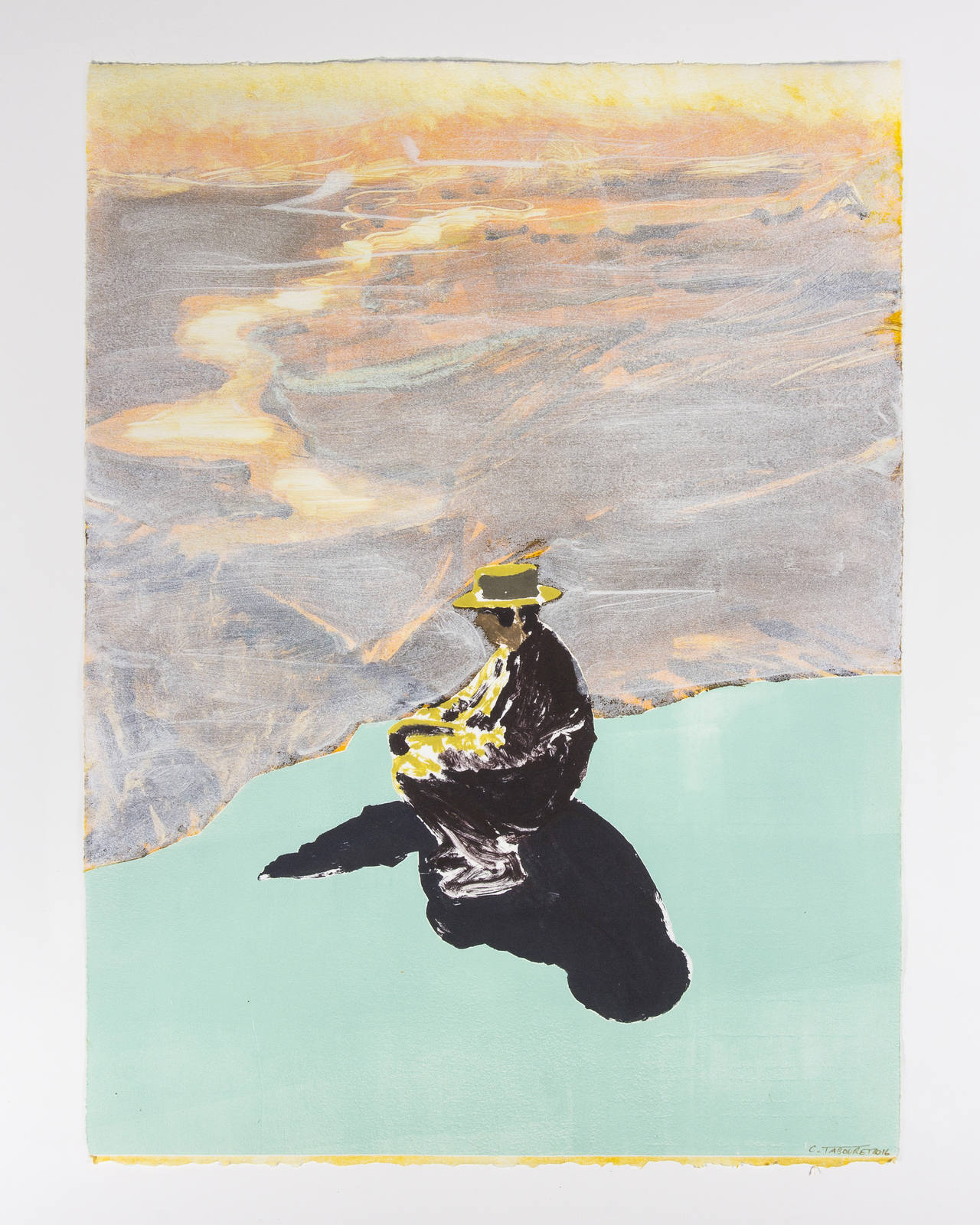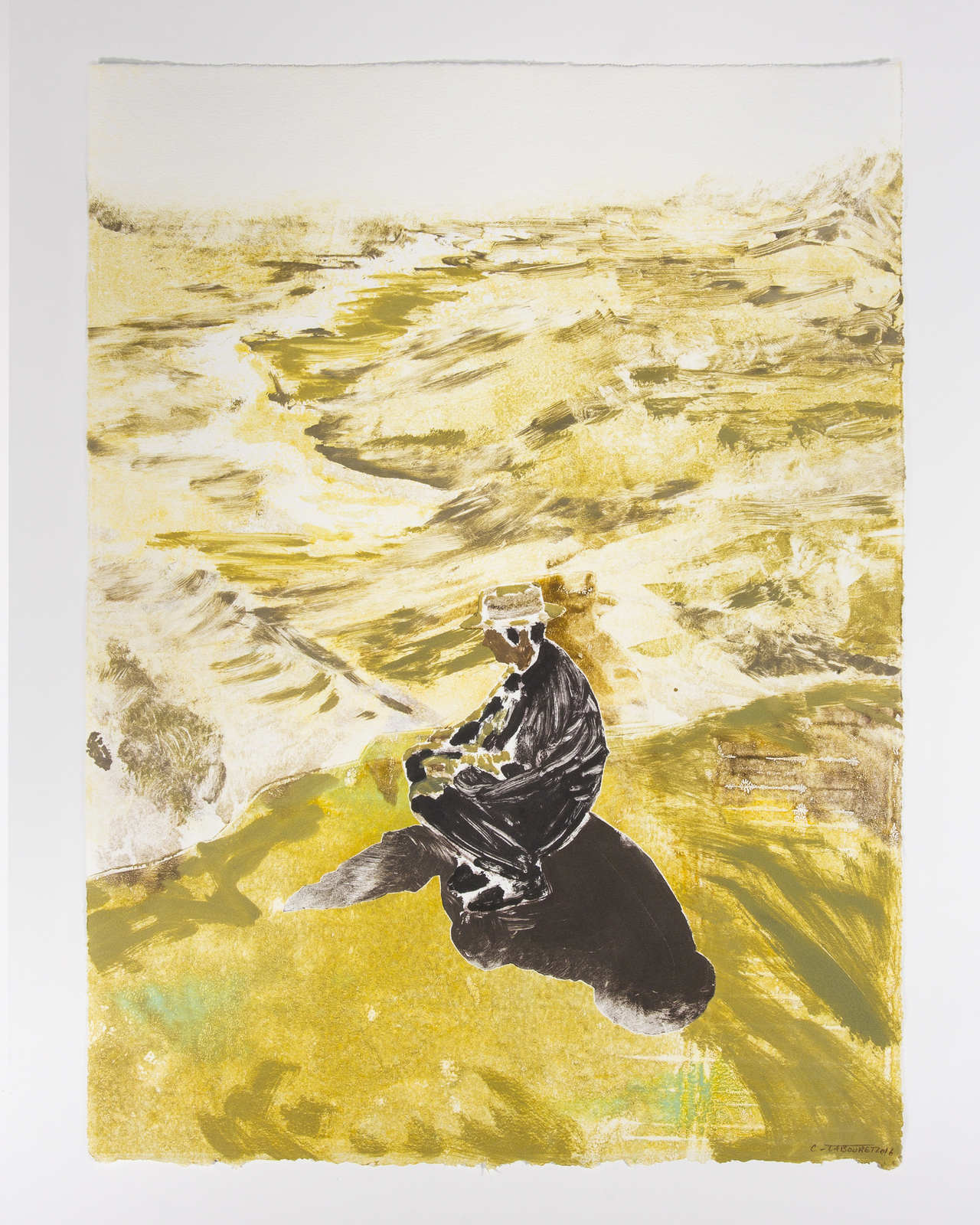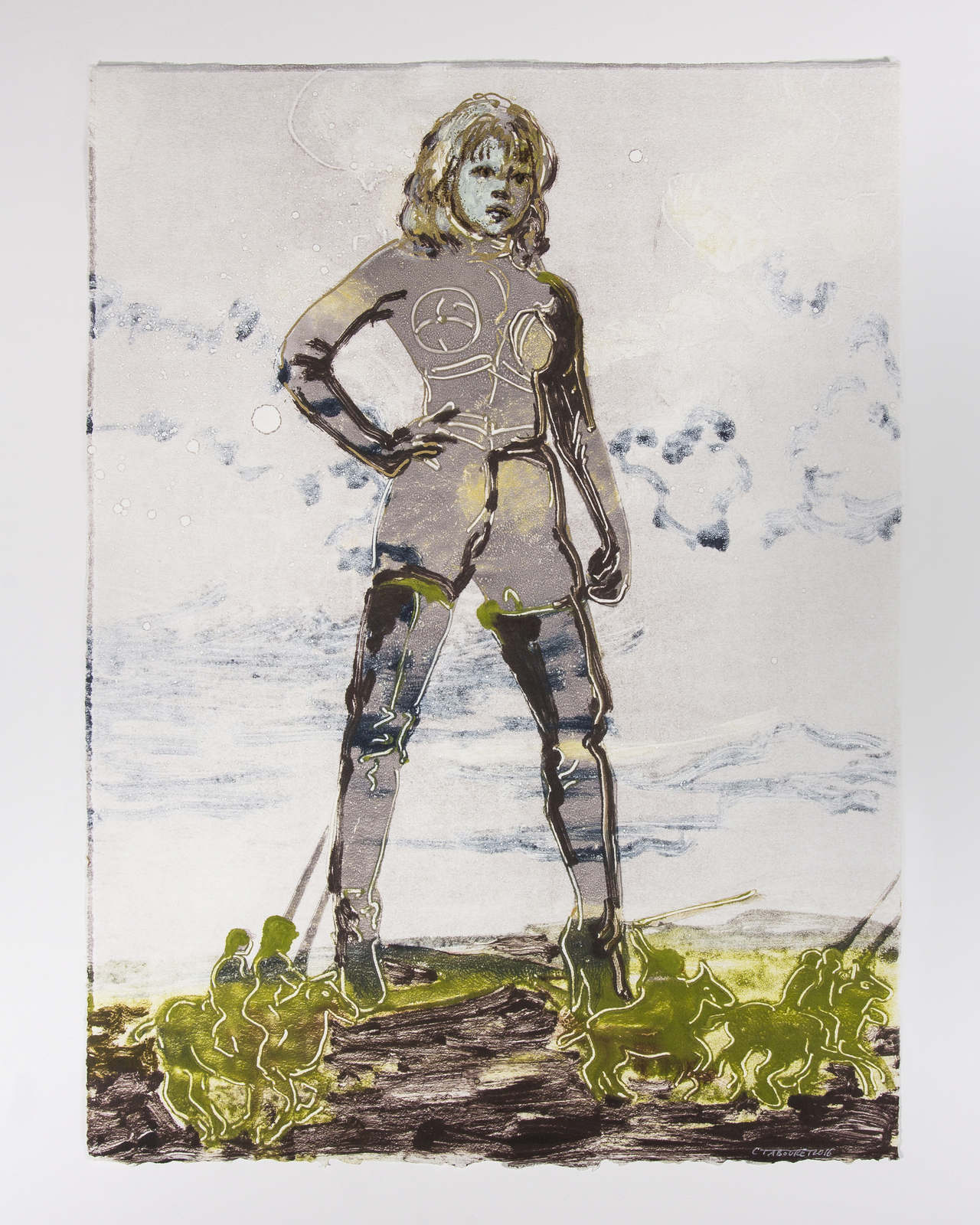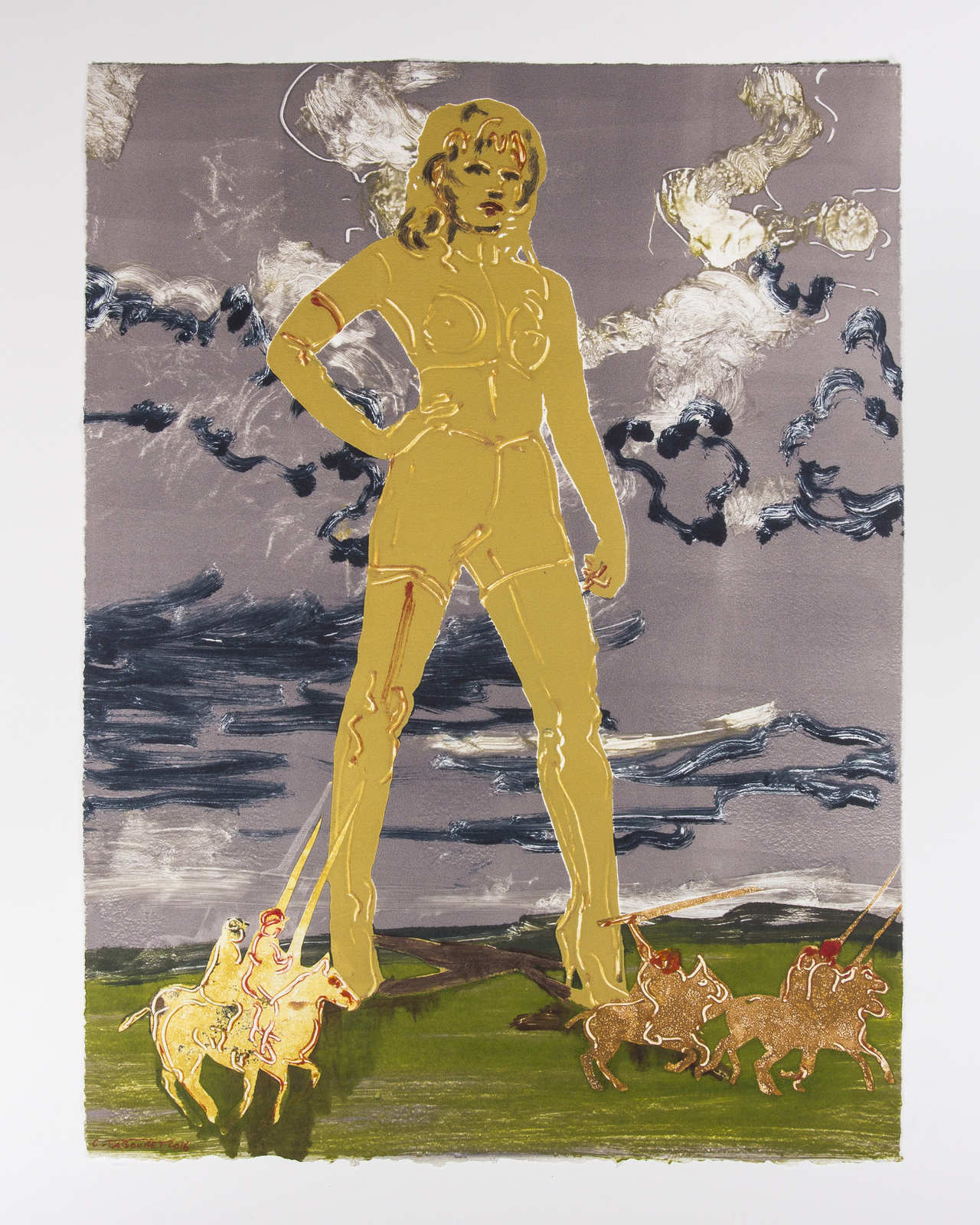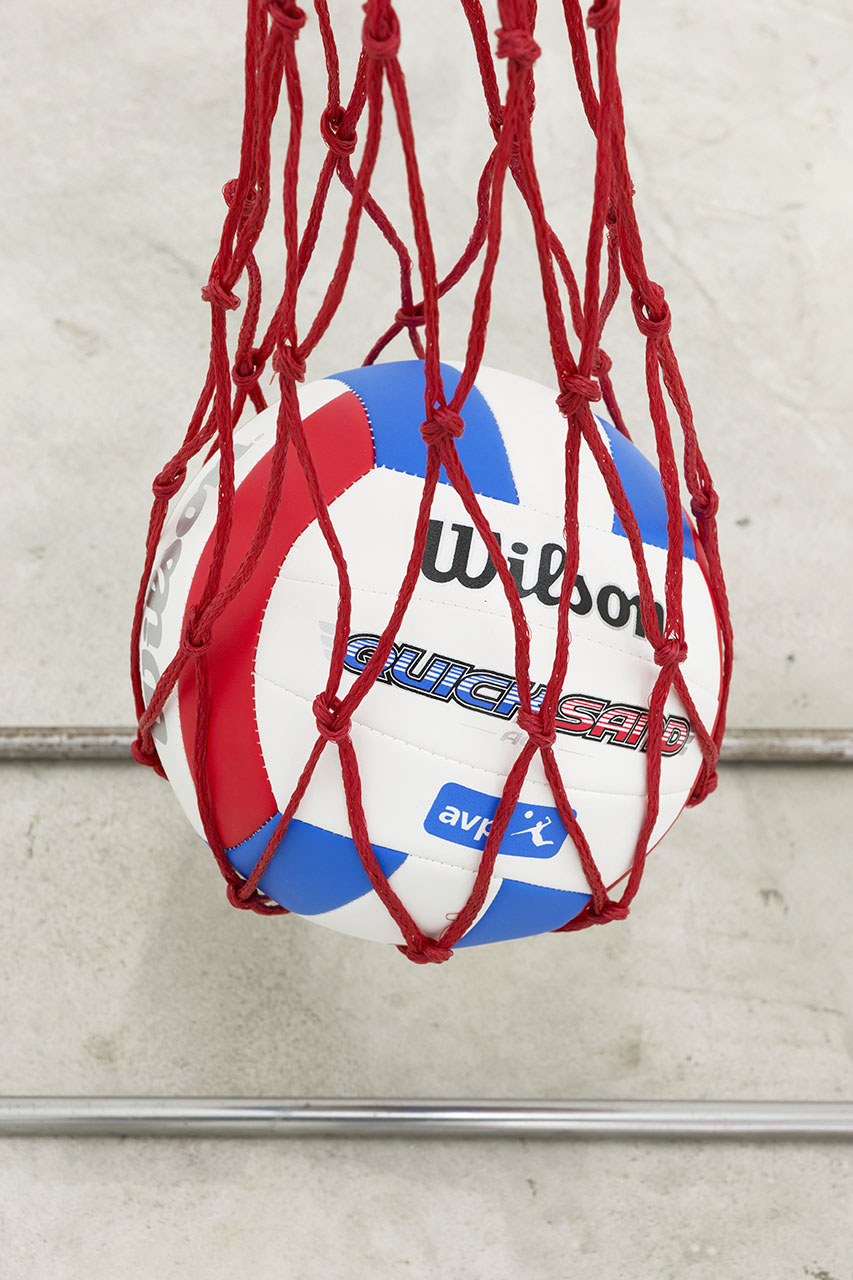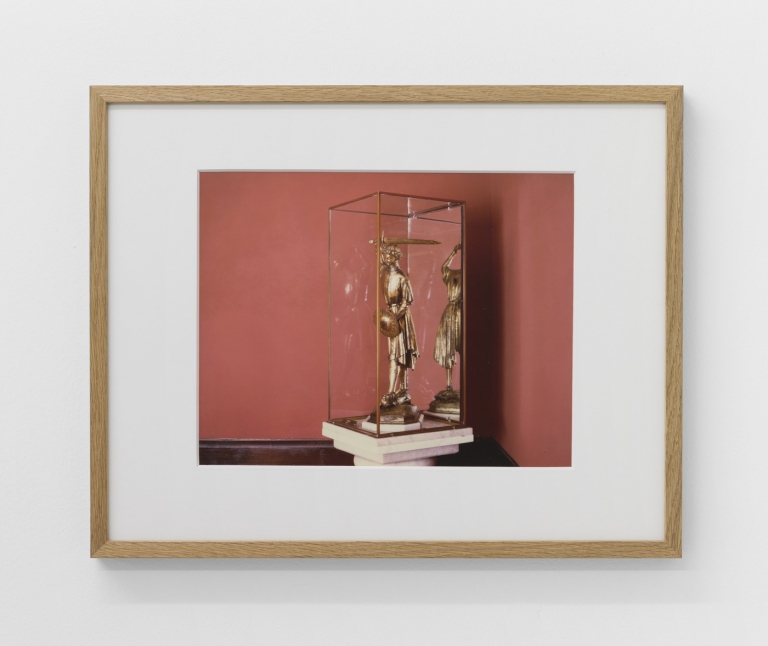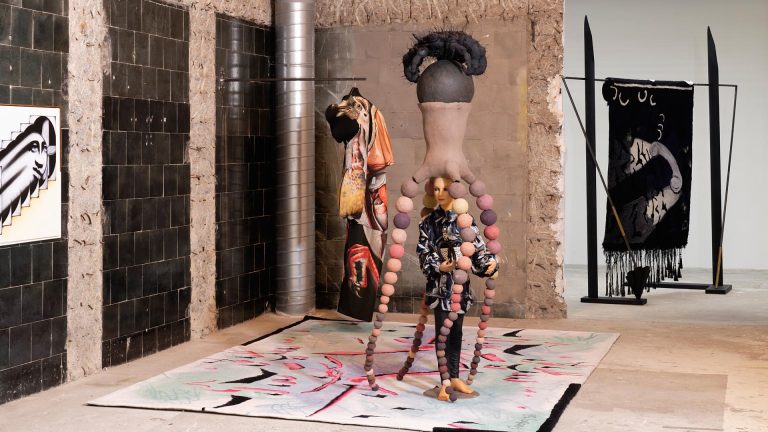Artist: Claire Tabouret
Exhibition title: Battlegrounds
Venue: Bugada & Cargnel, Paris, France
Date: October 21, 2016 – January 21, 2017
Photography: all images copyright and courtesy of the artist and Bugada & Cargnel, Paris
ACT I (entering):
It begins with her back to us and it will end—I might as well tell you now—in a full frontal confrontation. This time, entering the proscenium of the gallery is done with the same embrace of risk and responsibility as when one enters the theater of war. That is, with rules on the verge of being shed and codes of conduct inevitably eroding. But I am getting ahead of myself; that is not where we are now.
You entered the exhibition space and found yourself behind an androgynous figure, facing away, standing tall. The edges of the painted image are frayed; the depiction sits unevenly within the canvas. As the paint flirts with its surrounding structural edges, you can’t help but think that there are an infinite amount of points between the end of the stroke and its frame, and that if, as in Zeno’s paradox, the two cannot possibly meet, there can never really be impact, nor finality, nor death. As you look at the braided figure embedded in this “infinite” plane of the painting, it comes to mind that the canvas is rough, arid and scaling. The paint sits on it, thirsty and aggravated. It exudes hotheaded urgency through its materials while depicting cool calm in its imagery—a contradiction for you to store away. The figure, unaware and uninterested in your gaze, looks out toward a blurry, watery color field. Light seems to emanate from within the painting, not from without. It is radiating something like heat. And so it begins.
ACT II (a battleground amongst many):
When you turn the corner you find yourself in a room with unsettling and uneven walls. You’ve heard from soldiers that war is a slow animal, usually composed of long periods of waiting with short, albeit violent, bursts of activity. This particular battlefield illustrates this well. It is deceivingly calm, restrained; it seems organized and paced. A handful of paintings sit on disproportionate walls, facing you with confidence. The landscape is gendered now: faces of women, each wearing her own distinct psyche and state of mind, are accessorized with smudged makeup, like war paint; challenging a traditional sense of beautiful with a little bit of the hysterical, the unhinged. These faces, inspired by magazines and then painted from the imagination, are engaged, engaging.
Then, in sequence, in cause and effect, the larger canvases reveal a seated figure on the verge of a large landscape; a woman walking at dusk; an armored horse with its powerful knight and finally, a standing figure, literally larger than life, towering over a meddle of spears and soldiers in battle. The stances of war, as well as their representations, have assumed innumerable forms across eras and geographies. This particular sequence of paintings quotes from, and draw affinities between a sampling of styles such as Jean-François Millet’s raw representation of peasant life, the symbol-infused landscapes of traditional Chinese paintings and perhaps most obviously, Paolo Ucello’s infamous Battle of San Romano.
The latter, a triptych in which each part is integral to understanding the whole, enacts a precipitated sequence of events amidst the political entanglements of a war. Each of Claire Tabouret’s paintings displays a fragment of this, her version of the story, rich with the quotidian experience of each of its characters. If I were to guide you through the exhibition, we would end up in front of the namesake painting of the show. Battlegrounds is a smooth canvas with complicated skies. A giant woman, superhero-like, struts defiantly in an outfit reminiscent of leather dominatrix gear as much as of medieval armor: Jeanne D’Arc, Michelle Pfeiffer and Grace Jones. At her stiletto heels, horse(wo)men bolt forward, kicking up dust. She stands and makes eye contact, silently embodying all of the other women who watched us walk through the galleries. She is the quintessential multifaceted psyche, a Rorschach test; reading her is reading you.
ACT III (the fourth wall and the language of war):
There is one more room I want to show you. It is a backstage of sorts, a key for the paintings, a reveal. This final room of the show exhibits 20 monotype prints hanging evenly at eye level in the safety of frames. As you walk by them you start to decode a pattern, a rhythm. Characters, shapes and colors appear repeatedly in the prints like a game of linguistic and visual associations. I refer to them as a key because they turn the characters of the exhibition, whether primary or secondary (e.g., the horse(wo)men or the landscape), into symbols of a new vocabulary. Together, they allow you to read the rest of the exhibition, which is itself a kind of syntax and subsequent anthem. In this backstage, the components are revealed, baring the device, without beginning or end, as a circular passage of time; an endless loop of conflicts and ceasefires.
An epilogue (and the stakes):
Discipline, consistency and obedience are driving principals akin to both the military and the practice of painter Agnes Martin. In fact, the two figures in this body of work looking away from you, reader, are portraits of Martin (who, it must be noted, would say that she painted with her “back to the world”). While famous for her restrained palette, systematic use of lines and sublime mastery of light, Martin’s life was solitary; she opted to maintain a position in the margins for much of her career. Solitude, be it temporary or sustained, has often been perceived as an illness, she wrote [1] especially in women, but in her experience it was a quality that lead to rigor, dedication and artistic integrity. Martin painted with ardor and command, questioned traditional forms of authority and utilized the dry landscape of the desert as a vantage point to a world of her own.
Each of Claire Tabouret’s exhibitions builds on the last, like a thought delivered through stream of consciousness, undeterred by contradictions, playing both argument and counterargument against one another. Push and pull. Her last exhibition, Les Débutantes, consisted of crowds of adolescent characters gathering in each painting and looking forward toward a middle ground. You, viewer, were surrounded. Now mature, the faces of this body of work stand solitary, calm, claiming space with confidence using the white walls as pauses to amplify the magnetic intensity of the canvas’s contents. They bleed the kind of powerful, pleasurable, provocative sensation of freedom promised in certain forms of restraint, of domination.
–Lauren Mackler
[1] “We have been very strenuously conditioned against solitude. To be alone is considered to be a grievous and dangerous condition…. I suggest that people who like to be alone, who walk alone will perhaps be serious workers in the art field.” Agnes Martin: Writings, edited by Dieter Schwarz (Stuttgart: Hatje Cantz, 2005).
Claire Tabouret, The Blue Queen, 2016
Acrylic on canvas, 200 x 145 cm
Claire Tabouret, Battleground, 2016
Acrylic on canvas, 220 x 170 cm
Claire Tabouret, Back to The World, 2016
Acrylic on canvas, 183 x 122 cm
Claire Tabouret, Makeup (Red and Purple), 2016
Acrylic on wood, 61 x 41,5 cm
Claire Tabouret, Makeup (The Queen), 2016
Acrylic on wood, 61 x 41,5 cm
Claire Tabouret, Makeup (The Fighter), 2016
Acrylic on wood, 61 x 41,5 cm
Claire Tabouret, Makeup (Red Mouth), 2016
Acrylic on wood, 61 x 41,5 cm
Claire Tabouret, Battleground (The Spear), 2016
Monotype on paper, 51 x 38 cm
Claire Tabouret, Battleground (The Ghost), 2016
Monotype and collage on paper, 51 x 38 cm
Claire Tabouret, Battleground (Thunder), 2016
Monotype on paper, 51 x 38 cm
Claire Tabouret, Battleground (The Green Knights), 2016
Monotype on paper, 51 x 38 cm
Claire Tabouret, Battleground (The Yellow Spears), 2016
Monotype on paper, 51 x 38 cm
Claire Tabouret, The Knights, 2016
Monotype and collage on paper, 51 x 38 cm
Claire Tabouret, Back In Blue, 2016
Monotype on paper enhanced with grease crayon, 51 x 38 cm
Claire Tabouret, Calm (At Dawn), 2016
Monotype and collage on paper, 51 x 38 cm
Claire Tabouret, Calm (Morning), 2016
Monotype on paper, 51 x 38 cm
Claire Tabouret, Calm (Noon), 2016
Monotype on paper, 51 x 38 cm
Claire Tabouret, Calm (Evening), 2016
Monotype on paper, 51 x 38 cm
Claire Tabouret, Battleground (The Giant), 2016
Monotype on paper enhanced with grease crayon, 51 x 38 cm
Claire Tabouret, The Remaining Fighter, 2016
Monotype and collage on paper, 51 x 38 cm
Claire Tabouret, Battleground (Green Horses), 2016
Monotype on paper enhanced with felts and grease crayon, 51 x 38 cm
Claire Tabouret, Battleground (The Battle), 2016
Monotype on paper, 51 x 38 cm
Claire Tabouret, Battleground (The Red Horsemen), 2016
Monotype on paper, 51 x 38 cm
Claire Tabouret, Battleground (Yellow Horses), 2016
Monotype on paper enhanced with grease crayon, 51 x 38 cm
Claire Tabouret, The Long Walk, 2016
Monotype on paper, 51 x 38 cm
Claire Tabouret, The Ritual, 2016
Monotype and collage on paper, 51 x 38 cm

